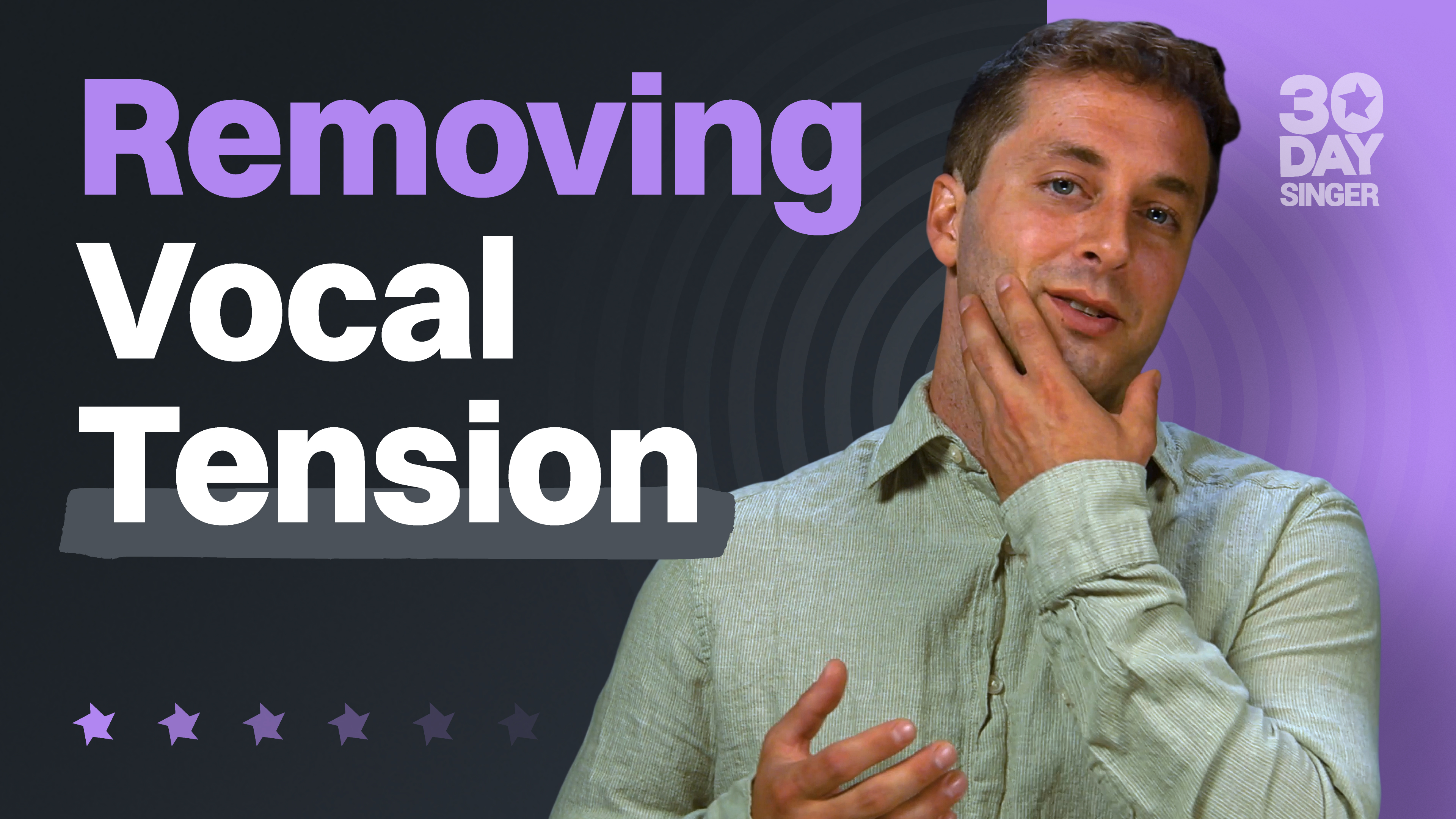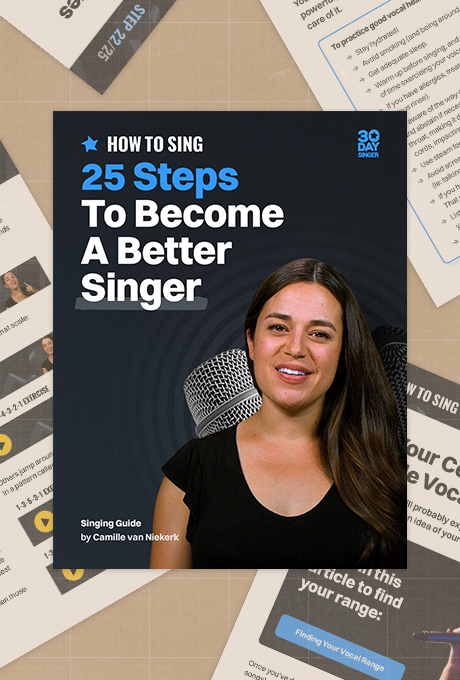Vocal Technique
Welcome to the Vocal Technique section of 30 Day Singer. These lessons focus on developing key singing techniques like vibrato, belting, singing higher or lower, breath control and much more. We offer guidance on how to learn these techniques and perfect them so you can perform with confidence. Some of these techniques are introduced in our beginner courses so if you need more time and focus on a particular area, these lessons come in very handy. You can bounce between these lessons freely or use a set combination of these lessons as part of your daily practice routine to monitor progress.
TUTORIALS
Intro to Vocal Registers
By Abram PoliakoffToday we’re talking about the registers of the voice, and we’ll try a few exercises to strengthen our voice within these registers. Many beginning singers have at least heard the terms “chest voice” and “head voice”. But if those terms are new to you, fear not! When we talk about registers, we’re referring to a section of the voice (or a collection of pitches) in which sound is produced a certain way and results in a specific tone quality. Continue to learn more about vocal registers!
All About Tone
By Abram PoliakoffWhat would you say if I asked you to describe the difference between Freddie Mercury’s voice and Elvis Presley’s? What about the difference between Ariana Grande’s voice and Adele’s? Each of these singers has a unique sound; and answering that question will get us talking about tone or timbre. While we all have a general sound that comes naturally to us, we can develop and explore different tone qualities within our voice. Keep watching for a tutorial on tone.
How to Gradually Sing Higher
By Camille van NiekerkYou know range extension takes time. But what exercises should you be using specifically to reach more high notes? Follow along and find out in my tutorial on how to gradually sing higher.
Range Extension
By Abram PoliakoffDo you want to increase your range? Do you find yourself straining for high notes or scooping for low notes? This tutorial is all about range extension. I'll give you principles and exercises to help you gradually increase your range in a healthy way. Let's get started!
How to Gradually Sing Lower
By Camille van NiekerkHow are your low notes sounding? If you think they could use a boost, watch my tutorial on “how to gradually sing lower”. Get ready to have some fun, and I’ll see you there!
How to Sing Vibrato Part 2
By Camille van NiekerkAre you ready to take your vibrato training to the next level? If so, check out How to Sing with Vibrato: Part 2! We’ll cover common vibrato issues and vibrato usage in different musical genres. See you there!
Breath Control Like A Pro
By Camille van NiekerkEver wonder how professional singers are able to hold a note forever? Watch this tutorial on pro breath control, and learn how to build up your stamina so you can master those long notes and phrases.
How to Avoid Vocal Cracks
By Abram PoliakoffThis lesson focuses on understanding and preventing vocal cracks while singing. Vocal cracks often occur when transitioning between different vocal registers, but with proper technique, they can be avoided.
Practice Removing Tension
By Abram PoliakoffThis tutorial is designed to help singers reduce tension in their voice to improve performance. It covers three main types of vocal tension: lifting and straining, which causes vocal fatigue; holding, which disrupts breath flow and creates tightness; and stress-related tension, which affects technique under pressure. The session includes exercises, song work, and mindful practices, using the song "The Parting Glass" to apply these techniques and release tension for smoother, more effortless singing.
Finding Your Breath
By Jonathan EstabrooksAn in-depth look at finding your breath, which is essential for healthy vocal technique. Jonathan teaches you how to engage your breath properly and specifically for singing at your best.
Frequently Asked Questions
Some great vocal warmups for singers start with gentle humming or lip trills to relax and engage your vocal cords without straining them. Then, work through some scales to gradually increase your pitch range and get your voice fully warmed up.
For a quick 5 minutes vocal warm up, try some lip trills or gentle humming for a couple of minutes. It’s effective and quickly preps your vocal cords for singing or speaking without overdoing it.
When your voice is sick, keep singing warmups light and gentle—like humming or low, quiet scales. Also, drink lots of warm fluids and rest your voice as much as possible.
Start with some light humming, followed by a few pitch glides (from low to high sounds) to get your voice comfortable. Finish with a few tongue and lip trills to help with articulation.
Two good vocal warm ups are humming and lip trills. These are super effective and easy vocal warm-ups that gently activate your vocal cords without causing strain. Both are great for starting any vocal exercise.
Breathing exercises and resonance drills, like humming and vocal slides, improve the quality and projection of your speaking voice. They help develop control and clarity, making your voice sound more confident.
Hydrate regularly, practice breathing exercises, and do daily warm-ups. Consistency with these habits will help your voice sound smoother and stronger over time.
To strengthen a weak speaking voice, practice deep breathing and speak from your diaphragm to add power. Also, try projection exercises like speaking in front of a mirror to boost confidence and clarity.
Focus on articulation exercises, like tongue twisters, and practice controlling your breath to avoid running out mid-sentence. Over time, these will improve clarity and help you speak with ease.
The four vocal function exercises are sustained phonation (holding a sound steadily), pitch glides (sliding between notes), lip trills, and staccato sounds on different pitches. They work together to strengthen and balance your vocal cords.












